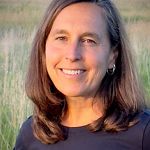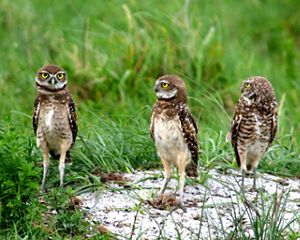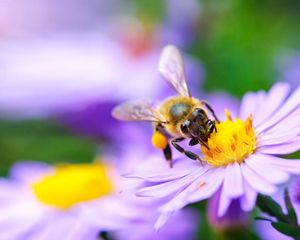
Little Acts of Short-eared Owl Kindness
Feel like adding a little joy to your day? A late afternoon walk or drive at Kankakee Sands, amidst the wintertime ice-covered prairie that glitters and sparkles as the sun sets, to see the short-eared owls is a wonderful way to end a day!
When I first wrote about short-eared owls in 2011, I remember the excitement of seeing for the first time this state-endangered species glide over the winter prairies of Kankakee Sands. Since those days, the number of short-eared owls at Kankakee Sands has soared! Where we used to occasionally see just one or two owls, we now see several flying each night.
See the owls!
Visit Kankakee SandsThe short-eared owl’s scientific name, Asio flammeus, means flame-colored eared owl. What a perfect name for this buff-colored owl that winters here at Kankakee Sands where our prairies are fire dependent and can be best seen when the sky is ablaze with the setting of the sun. Short-eared owls are known to be crepuscular, flying most regularly at dusk and dawn.
The 15-inch-tall owl, weighing only 10-12 ounces and having a wingspan of more than 40 inches, is an aerial acrobat—swooping, dipping and diving almost effortlessly with the long deep wingbeats.
Quote: Alyssa Nyberg
When folks are passing you, remember to nod or give a wave and make eye contact. That little act of kindness may just come back to find you when an owl perches or flies by and looks you right in the eyes. They often do!

When I moved here to Newton County 25 years ago, I realized right away that Newton County is a special place. It has small towns where people know and care about one another. It has the beauty of the countryside, and it has amazing wildlife that depends on those natural spaces.
And I’ve had the joy of experiencing the sweetest little acts of kindness when driving the roads of Newton County. When drivers pass one another on the road, they acknowledge each other. It might be a nod with eye contact, or a quick wave of the hand, or perhaps just a lifting of a few fingers off the steering wheel. It says hello, I see you, and you matter. That little gesture goes a long way in my heart. It’s a little roadside act of kindness.
Over the years, the owls have learned what I did—that Kankakee Sands is a special place. It is worth the time to be here. For the owls, these planted prairies, with the diversity of flowers, grasses and shrubs, have everything the owls need—food and a place to rest. For us humans, Kankakee Sands can be a place to give us what we need—food for our souls and a place to be inspired.
Should you come to see the short-eared owls before they leave the Kankakee Sands area in early spring for their breeding grounds the upper great lakes, Canada and Alaska, remember those little acts of kindness when on the Newton County roads.
Park in designated parking areas or pull off completely to the side of the road. Do not stop your vehicle or park in the middle of the road. Resist every urge to set up your tripod and spotting scope on the road. Wear reflective colors. Remember that these are public access roads, used by many on their way to the high school, home after a long day of work, or on their way out for the evening. You may not be in a hurry, but the person sharing the road with you might be!
When folks are passing you, remember to nod or give a wave and make eye contact. That little act of kindness may just come back to find you when an owl perches or flies by and looks you right in the eyes. They often do!
It’s a beautiful, wonderful world, isn’t it? Wishing you all the best in 2026! Happy New Year!
*A state endangered species is any animal whose prospects for survival or recruitment within the state are in immediate jeopardy and are in danger of disappearing from the state.
Let Nature Take Root in Your Inbox
Get the latest news, photos and opportunities near you, delivered monthly. Check out a sample Nature News email.



